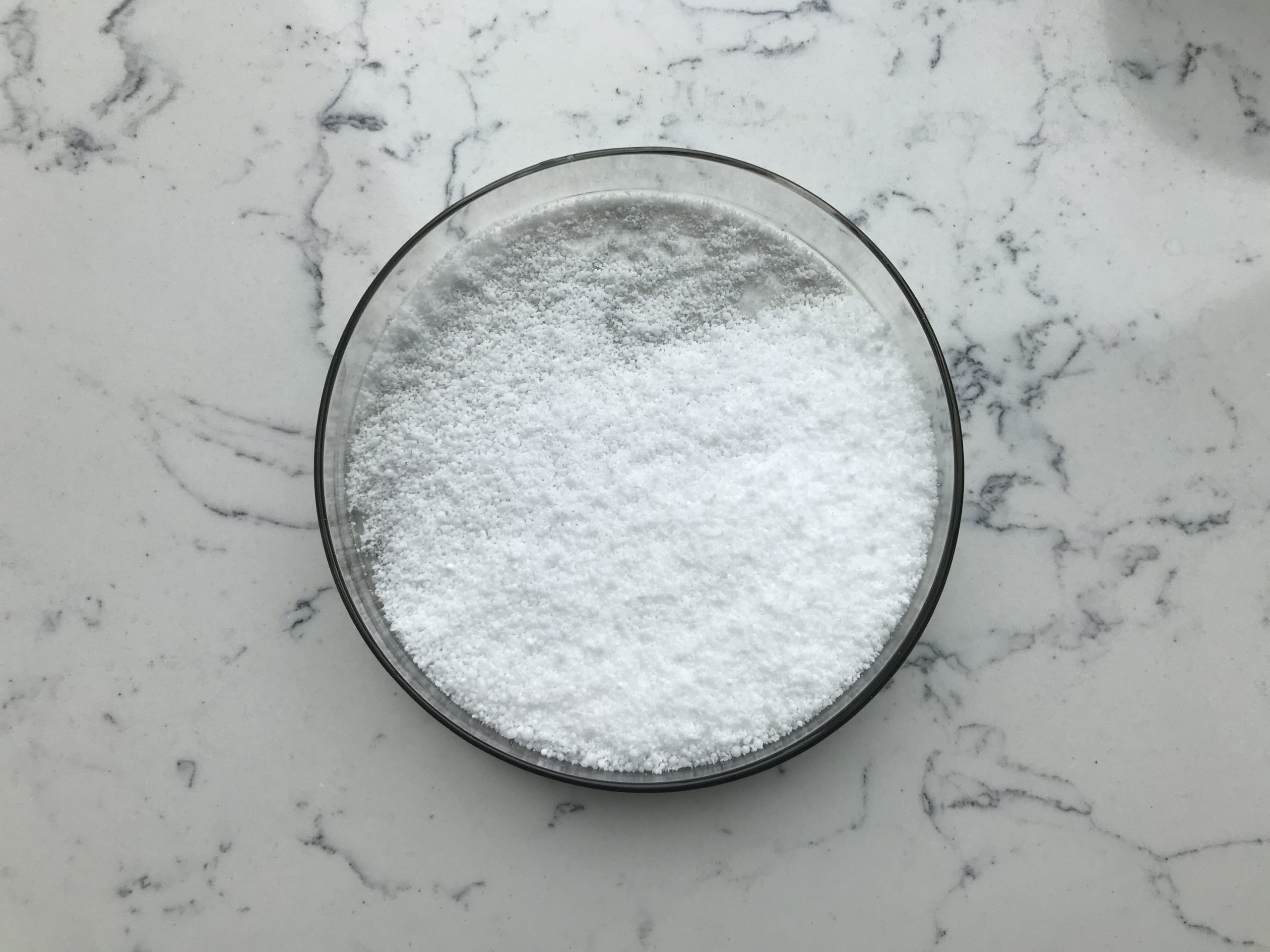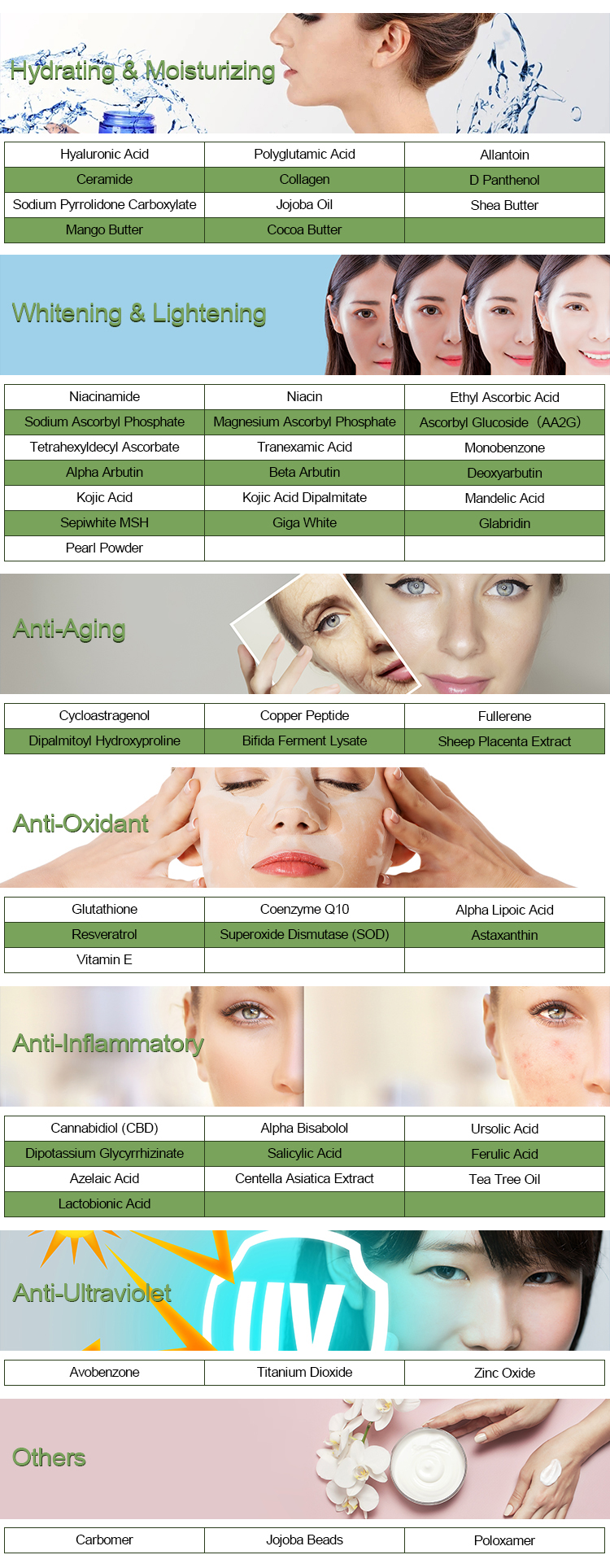Poloxamer 407 is a non-ionic surfactant and triblock copolymer that is commonly used in the pharmaceutical and medical industries.
Benefits of Poloxamer 407
Drug Solubilization: Poloxamer 407 can improve the solubility of poorly water-soluble drugs. This is especially important in the pharmaceutical industry as it enables the development of formulations for drugs that would otherwise have limited bioavailability.
Controlled Drug Release: Poloxamer 407 can be used to create controlled drug release systems, such as thermosensitive gels. These gels change their state in response to temperature, allowing for the gradual release of drugs over time.
Topical Drug Delivery: Poloxamer 407 is often used in topical formulations, such as creams and ointments, to improve the penetration and absorption of drugs through the skin.
Ophthalmic Applications: It is used in eye drops and ointments to provide a lubricating effect and improve the retention of the drug on the ocular surface, enhancing the effectiveness of the medication.

Cell Culture and Biotechnology: Poloxamer 407 is used in cell culture as a non-toxic surfactant for the detachment of adherent cells. It is also used to protect cells during cryopreservation.
Hemorheology: Poloxamer 407 can be used to alter the rheological properties of blood and plasma. This is important in some medical applications, such as during surgery or in blood storage.
Wound Healing: It can be found in wound care products as it helps to keep the wound moist and may promote tissue repair.
Injections: Poloxamer 407 is used to solubilize and stabilize certain drugs in injectable formulations.
Cosmetic and Personal Care Products: It can be found in various cosmetic and personal care products like creams, lotions, and gels, where it serves as a stabilizer, emulsifier, or thickening agent.
Toothpaste: In some toothpaste formulations, Poloxamer 407 can help disperse and solubilize active ingredients, contributing to the overall effectiveness of the product.
It’s important to note that while Poloxamer 407 offers many benefits, its use should be carefully regulated, especially in pharmaceuticals and medical products, to ensure safety and efficacy. Additionally, the specific applications and benefits can vary depending on the formulation and context in which it is used. Always consult with a healthcare professional or pharmacist regarding the use of products containing Poloxamer 407, especially for medical or pharmaceutical purposes.
Difference between Poloxamer 407 and Poloxamer 188
Poloxamer 407 and Poloxamer 188 are both nonionic surfactants that belong to the Poloxamer family of compounds. They are often used in pharmaceuticals, cosmetics, and other industries due to their unique properties. While they share some similarities, they also have distinct differences, which are important to consider when selecting the appropriate one for a specific application. Here are the key differences between Poloxamer 407 and Poloxamer 188:
Composition:
Poloxamer 407: Poloxamer 407, also known as Pluronic F127, is a triblock copolymer composed of a central hydrophobic polypropylene oxide (PPO) chain flanked by two hydrophilic polyethylene oxide (PEO) chains.
Poloxamer 188: Poloxamer 188, also known as Pluronic F68, is also a triblock copolymer but has a different PPO-PEO composition compared to Poloxamer 407. It has a shorter PPO chain and longer PEO chains.
Solubility:
Poloxamer 407 is known for its temperature-dependent solubility behavior. It exhibits a lower critical solution temperature (LCST), which means it becomes less soluble in water as the temperature increases. This property makes it useful for applications like drug delivery systems that can release drugs at specific temperatures.
Poloxamer 188 has a higher solubility in water and does not exhibit a distinct LCST behavior. It remains soluble over a wide range of temperatures.
Gelation Properties:
Poloxamer 407 is commonly used to form thermoreversible gels, which can be liquid at low temperatures and form a gel at higher temperatures. This gelation behavior is used in various pharmaceutical and cosmetic formulations.
Poloxamer 188 does not readily form thermoreversible gels. It is often used as a stabilizing agent and emulsifier in pharmaceuticals and as a cryoprotectant for cell storage.

Biocompatibility:
Poloxamer 407 is generally considered less biocompatible compared to Poloxamer 188. This is an important consideration when selecting a polymer for drug delivery systems and other medical applications.
Pharmaceutical Applications:
Poloxamer 407 is often used in pharmaceuticals for the preparation of controlled-release drug delivery systems and various oral and topical formulations.
Poloxamer 188 is used in pharmaceuticals for its emulsifying and stabilizing properties and is also utilized for cryopreservation of cells and tissues.
In summary, Poloxamer 407 and Poloxamer 188 differ in their composition, solubility behavior, gelation properties, and biocompatibility, which makes them suitable for different applications. The choice between these two Poloxamers depends on the specific needs of the formulation or process in which they are being used.
